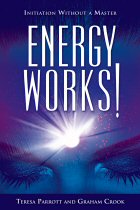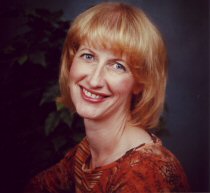

M.B. Ch.B.
M.R.C.P.(UK)
SKHM Teacher
Reiki & Karuna Master

B.M. M.R.C.Psych. MSc.
SKHM Teacher
Reiki & Karuna Master
 |
Patrick
Zeigler Founder of the All Love / SKHM system |
Graham
and Teresa have explored the world of SKHM to a depth that few
have been able to achieve, and, most importantly, they have been
able to share their experience with others through their words
in the most beautiful way. Those who read about their experience
will be initiated in a journey of the heart. I highly recommend
allowing yourself to experience that journey. |
|
How do we learn?
A friend’s four-year-old daughter asked me, ‘How much does your house weigh?’ ‘Well,’ I said, ‘I am not really sure.’ Unimpressed, she asked what the piano was, then said, ‘Why is the piano a piano?’
Now there’s a question.
To a four-year old, of course, everything could be just about anything anybody says it is. My house might weigh three hundred tadpoles, or the piano might really be a rainbow.So, what we learn depends partly on the answers we got to the questions we asked. In those early years, we learned how to label many different things, including abstract things like our emotions. Some of which we have never redefined. That is pretty amazing. I mean, now, as an adult, would you trust a four-year-old’s definitions?
Psychology has described how we learn by connecting things together. As a result of our individual experiences, particular thoughts, emotions and behaviours become associated with one another; from these associations we form the mental maps, emotional links and behavioural response patterns that determine our reactions to both familiar and new experiences. We tend to repeat these cycles until we do something to break them.
It is only by exploring and releasing emotions, challenging and modifying thoughts and beliefs, or substituting alternative behaviours, that we can interrupt maladaptive cycles and update outmoded or no longer appropriate learned responses.
The psychoanalytical model agrees with this and describes how our template or blueprint for action, feeling and response in relationships was probably set in the first few years of life, so by tracing current emotions and behaviour back to past experiences and events we can reveal the origin of particular habits and responses. What we learned has stuck, so we simply keep repeating it. It is very unlikely to change unless we see the connection.
And we do not just learn via words.
Six-year-old Tom’s mother keeps telling him that she loves him, but when he puts his face forwards for a kiss, she turns away.
This is an example of what Gregory Bateson in the 1950s described as the double bind, where verbal communication is contradicted by non-verbal communication. People say things their bodies do not believe; the words mean one thing, but the tone, facial expression or body language tells another story. Each communication apparently negates the other. We have all seen how people say one thing, but do another. For example, your mum says you must tell the truth, but then when you tell one of her friends he is fat, you are told off - even though it is true.
It is not surprising that we get all muddled up in our minds. Words will always have a vaguely hollow ring if they do not match what the body says. The problem is you cannot choose which to believe. The whole point of a double bind is that it is not either/or; it is both. Mixed messages become inextricably linked. Tom’s mother says she loves him, but gives non-verbal messages of rejection.
Thirty years later, Tom wonders why he feels anxious whenever his girlfriend tries to get close to him, and why he does not trust her when she says she loves him.
Knowing how those messages got mixed; it is understandable that little Tom learned to associate the word love with being rejected physically and feeling hurt.
The problem is that the adult Tom does not know any of that— not consciously anyway. Until he can recognise some of those connections, by accessing memories from his unconscious mind, he is not going to know how his vision of the world was formed or what certain words, emotions and sensations actually mean to him.
We do not consciously remember how we learned things. We cannot even necessarily put words to what we learned, or we might have made connections before we had words to name them— such as that love means constantly being rejected, or that approval depends on doing what others want you to do.
We are all unique. We have all learned a different version of the world. So, we cannot unravel our own problems by listening to anyone else’s definitions, and we cannot refine our own definitions until we know what they are.
Extracts from Energy Works! Initiation without a Master.
Authors Teresa Parrott & Graham Crook. Foreword by Patrick Zeigler. ©O Books 2005
© 2005-2015 Teresa Parrott and Graham Crook. - Copyright
Shenu ©1999-2015 Patrick Zeigler